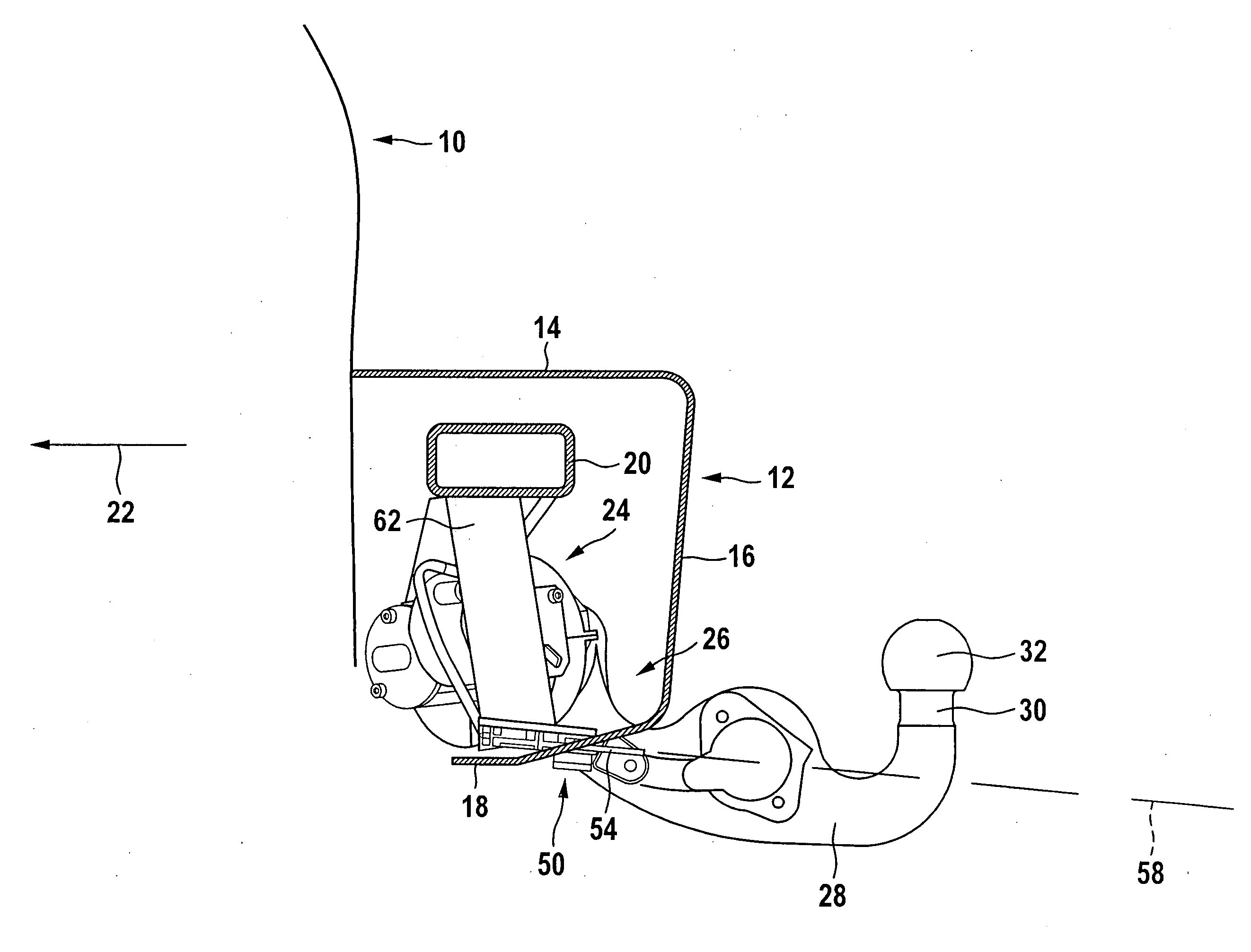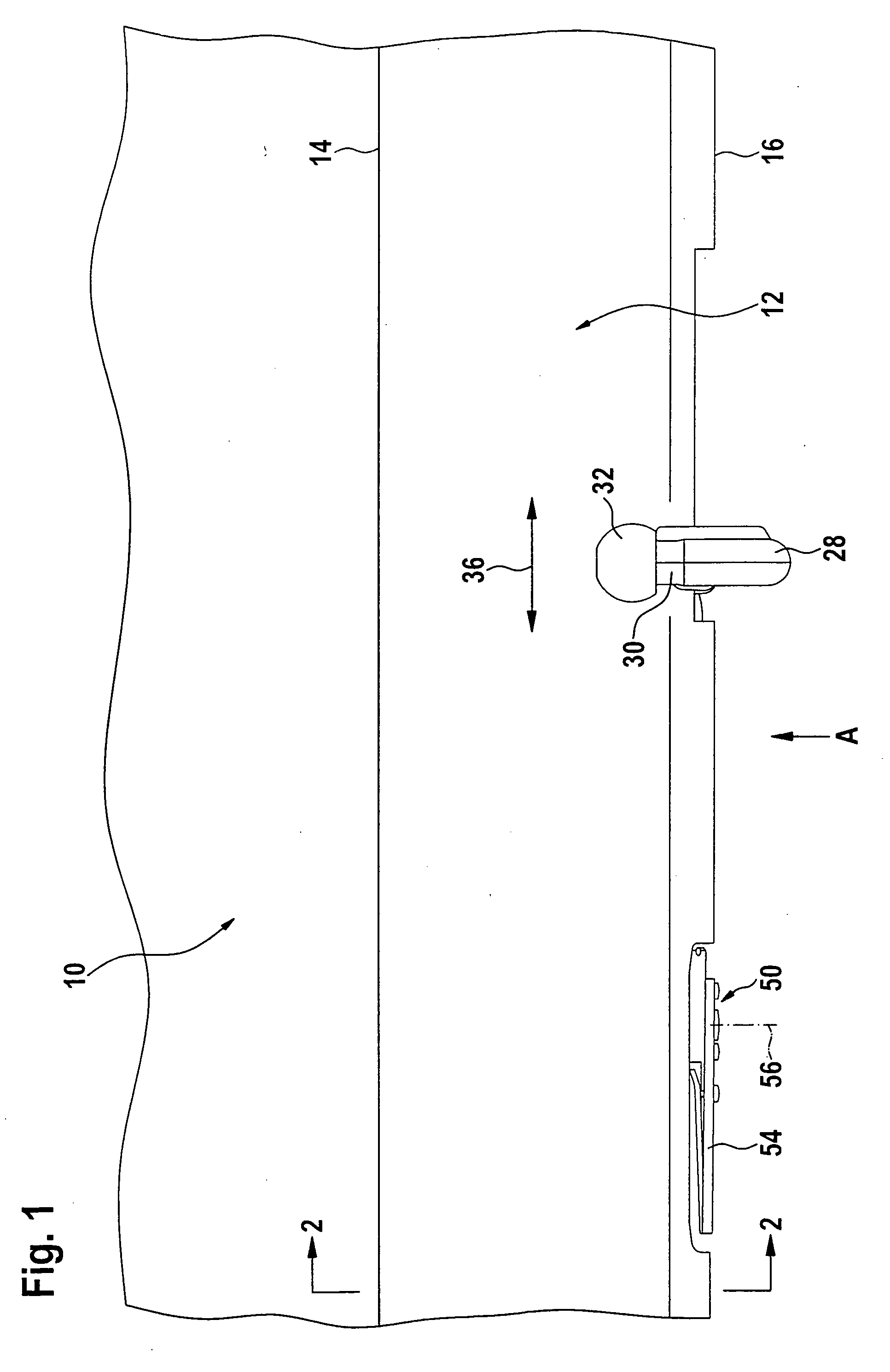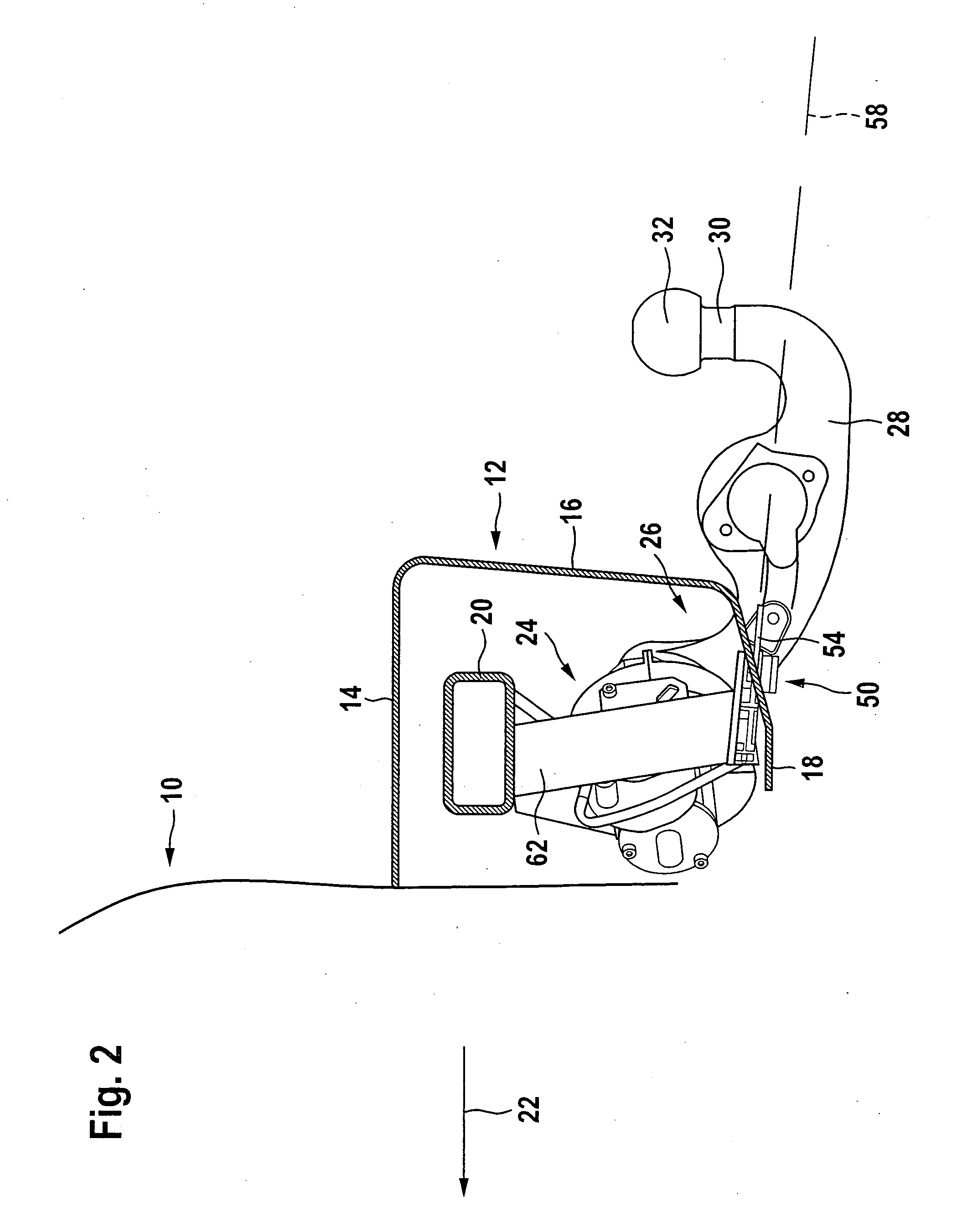Actuating device
a technology of actuating device and trailer coupling, which is applied in the direction of towing device, supplementary fitting, vehicle components, etc., can solve the problem of not being able to be actuated, and achieve the effect of simplifying the installation of the trailer coupling with the actuating devi
- Summary
- Abstract
- Description
- Claims
- Application Information
AI Technical Summary
Benefits of technology
Problems solved by technology
Method used
Image
Examples
first embodiment
[0093] The securing element 82 is designed in the first embodiment as a locking detent pivotable about an axis 86 and having a locking nose 88 which engages behind a securing element receiving means 84 designed as a pin 90 in order to secure the lever 54 in the starting position. For this purpose, the securing element 82 is acted upon with a spring 92 such that the locking nose 88 always has the tendency to transfer into the position engaging behind the pin 90.
[0094] In order to release the securing element 82 designed as a locking detent, this is connected to a releasing lever 94 which extends at an acute angle to the lever 54 in the locking position of the securing element 82 and is movable in the direction of the lever 54 in order to release the securing element 82, wherein, in this case, as illustrated in FIG. 8, the securing element 82 designed as a locking detent pivots about the axis 86 to such an extent that the locking nose 88 can be moved past the pin 90 and, consequently,...
second embodiment
[0095] In a second embodiment, illustrated in FIG. 9, the securing device 80′ is designed in such a manner that a locking pin 96 engages with a locking recess 98 in the device base 52 in order to secure the lever 54 in the starting position.
[0096] The securing device 80′ is now releasable in that the lever 54, together with the guide member 64, can be displaced in a release direction 100 to such an extent until the locking pin 96 no longer engages with the locking recess 98 and the lever 54 can be rotated about the axis 56 with the guide member 64.
[0097] For this purpose, the lever 54 with the guide member 64 is held on a bearing bolt which is designated as a whole as 102 and, for its part, is mounted for rotation in a bearing opening 104 in the device base 52 and, on the other hand, is acted upon by a spring 106 in such a manner that the lever 54 with the guide member 64 is always acted upon in the direction of the device base 52 so that when the lever 54 is not acted upon the loc...
third embodiment
[0098] In a third embodiment, illustrated in FIG. 10, the device base 52 itself is provided with a locking pin 116 which can be brought into engagement with a locking recess 118 in the lever 54 itself, wherein the locking recess 118 is arranged in an area located between a contact surface 120 of the lever 54 and the axis 56.
[0099] Due to tilting the lever 54 as a result of the fact that this is acted upon in the area of the hand contact surface 120, the lever may be moved to such an extent that the locking recess 118 disengages from the locking pin 96.
[0100] For this purpose, the bearing bolt 102 is mounted with clearance in the bearing opening 104 and is likewise acted upon by the spring 106 such that it has the tendency to abut the guide member 64 with its contact side 122 on a contact side 124 of the device base 52 whereas during action on the hand contact surface 120 in the release direction 102′ the guide member 64 can lift away from the contact side 124 at least with parts of...
PUM
 Login to View More
Login to View More Abstract
Description
Claims
Application Information
 Login to View More
Login to View More - R&D
- Intellectual Property
- Life Sciences
- Materials
- Tech Scout
- Unparalleled Data Quality
- Higher Quality Content
- 60% Fewer Hallucinations
Browse by: Latest US Patents, China's latest patents, Technical Efficacy Thesaurus, Application Domain, Technology Topic, Popular Technical Reports.
© 2025 PatSnap. All rights reserved.Legal|Privacy policy|Modern Slavery Act Transparency Statement|Sitemap|About US| Contact US: help@patsnap.com



